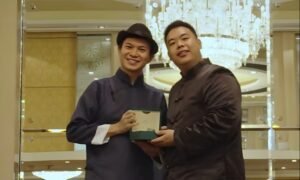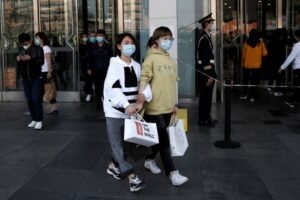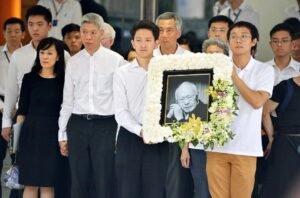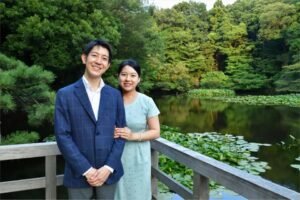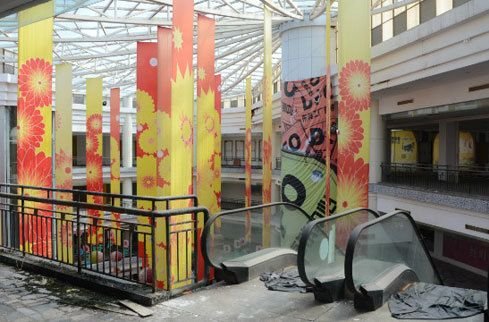
The world's largest shopping center became an abandoned building 1
New South China shopping center in Guangdong province (China) opened in 2005, has an area of about 465,000 m2, and can accommodate 2,350 stores.
After 8 years of operation, the New South China shopping center still looks like an abandoned building.
In the outdoor square, hundreds of palm trees combine with world-famous replicas such as the Arc de Triomphe in Paris, the giant Egyptian sphinx, fountains and canals with gondolas.
However, this shopping center is almost abandoned with only a few stores on display, even though it was previously built and designed majestically.
In the entertainment area, more than half of the employees sleep on the counters or kill time by chatting together while the high-speed roller coaster makes loud noises.
Opened to the public in 2005, the investor expects New South China to attract about 100,000 people per day.
Part of the problem is location.
Deserted shopping centers are also a consequence of rapid urbanization and the flight from real estate investment projects.
This shopping center is not the only case.
The credit boom to stimulate the economy after the financial crisis has led to the rapid development of uninhabited apartments and commercial areas through widespread speculative construction.
`What China did during the credit boom was create many ghost cities, which are projects that have no commercial basis and are not viable,` expert Jonathan Anderson commented in a research paper.
Besides, Dongguan is facing many problems such as factories closing and moving production to other cities in China and possibly moving abroad with cheaper labor costs.
However, the shopping center plans to increase the number of tenants, said Ye Ji Ning, head of South China Mall’s investment unit.
In 2007, the shopping center was relaunched and its name was changed from “South China Mall” to “New South China Mall, Living City`. A restoration plan was put in place. But after restructuring,
Some images of the New South China shopping center becoming an abandoned building:
Phuong Mai (According to CNN)
